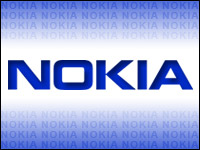
Marking another step in the evolution of cellular phone service, Nokia launched its first public Unlicensed Mobile Access (UMA) pilot over Wireless LAN in Oulu, Finland last week.
Converged technologies like UMA greatly expand the options for connecting via mobile devices. Specifically, UMA allows wireless users to roam and hand over calls between GSM cellular and wide area networks using a special dual-mode device. In other words, it combines the benefits of mobile service and fixed landline service through voice over WLAN.
“UMA technology truly brings simplicity in the usage of voice over IP,” said Peter Ropke, senior vice president of Nokia’s Mobile Phones R&D. “This pilot project is an important step forward in bringing functional UMA technology to the mass market. Both operators and consumers will be able to garner the benefits of this new technology.”
The Rise of UMA
Motorola began conducting trials of UMA with seven European carriers last year. Alcatel last year also announced it will offer a version of UMA that works with both WiFi technology and the proprietary Bluetooth wireless access protocol.
Many carriers believe the solution will be a boon in rural areas because calls could be handed off to local WiFi networks where wireless phone networks don’t reach. UMA could help callers in urban areas avoid the problem of having calling services unavailable inside large buildings.
That could translate to more revenue for mobile carriers from calls that are currently being made on land lines. It could also keep subscribers from jumping to competitors by offering mobile services as they become available. The dual-mode handsets from Nokia and Motorola enable users to tap into the technology.
“There’s been some doubts about the long-term future of UMA, but clearly the interest from operators indicate that this technology is not going away,” Current Analysis analyst Peter Jarich told TechNewsWorld. “There is a lot of support on the handset vendor side and the network side.”
Mass Marketing UMA
Analysts said there are clear benefits of UMA to customers and carriers. UMA allows the mobile phone user to make calls through WLAN Internet networks, which can offer faster data transfer than cellular networks. For operators, UMA makes it easier and cheaper to expand area coverage by implementing WLAN hotspots instead of costly base stations.
Conducted under real life surroundings and conditions, Nokia’s live trial will last at least two months. Fifty families from Oulu will be trying and testing the functionalities of this new technology using the Nokia 6136 mobile device.
Catching the UMA Wave
The pilot project is a joint venture between Nokia, the DNA/Finnet group and the City of Oulu. The City of Oulu announced the Pan Oulu project last year as a way to allow its citizens to receive free WLAN Internet via hotspots around the city.
One major factor in the consumer adoption of UMA are the actual devices. The latest affordable dual-use phones are hardly the iconic devices that today’s wireless consumers demand, Jarich said.
“The cost savings of UMA will be attractive to customers, but the devices that combine GSM and WiFi are not cool and slick,” he noted. “If we can get this technology into a Razr — and Motorola has plans to do that — it should help the adoption.”











































